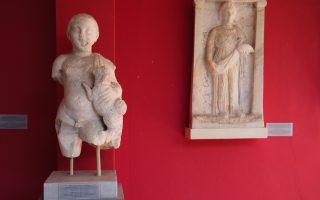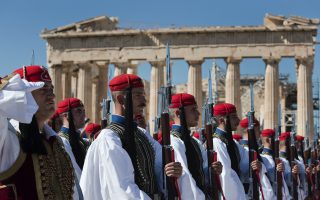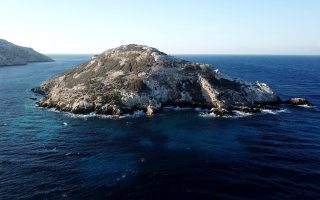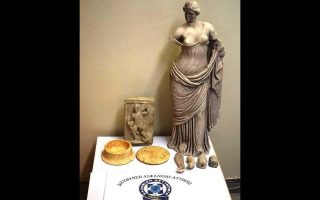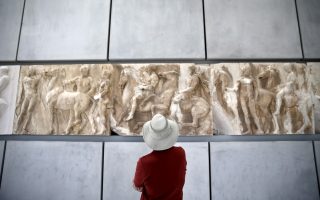Restoration of Parthenon’s north wall to showcase citadel’s geometry

The Parthenon is to be brought one step closer to what it looked like in the 18th century after the Central Archaeological Council (KAS) last week approved a project to restore the long northern wall of its inner structure (known as the cella or naos).
The relevant study approved by KAS is the work of late architect Charalambos Bouras, a key figure in the long-running restoration of the Acropolis, who also served as president of the Committee for the Conservation of the Acropolis Monuments. The study proposes rebuilding a section of the fallen wall by reinstalling 360 ancient stones alongside 90 new ones made from marble from Dionysos, north of Athens, which closely resembles the Parthenon’s original Pentelic stone.
Once completed, the construction will effectively return the northern wall to the form it had following the bombing of the Parthenon by Fransesco Morosini in 1687 and up to 1822, when the Ottomans removed around 500 ancient stones during the siege of the Acropolis in order to extract the lead joints installed by the ancient builders to connect them.
In the first phase of the restoration, the height of the wall’s west side will reach 4.5 meters, while on the east end it will reach 10 meters. Where the restoration includes the section that once bore the frieze and the architrave – which were destroyed during the 1822 siege and by Lord Elgin’s plundering of the Parthenon marbles – the height of the wall will come to 13 meters. This portion of the study was the subject of intense debate in the KAS meeting and, according to sources, two members of the council registered their concerns and asked for further studies to be conducted to that the use of new material can be avoided as much as possible.
KAS’ decision is hailed as a milestone, as it paves the way for the restoration of an important part of the Parthenon’s identity. When the restoration of south wall also moves ahead (on the basis of the study for the north wall), the citadel’s geometry and distinct architectural style will be better revealed. Both projects will be costly and painstaking, taking at least 15 years to complete.
According to the Culture Ministry’s Directorate for the Restoration of Ancient Monuments, the study is a “very important event in the Parthenon’s modern history,” as it represents a culmination of the significant efforts for the citadel’s restoration by Bouras and those of professor and KAS member Manolis Korres, which began over three decades ago.
Efforts to restore the Acropolis began following the founding of the Greek state in 1834-1835 with the use of iron. Another large program was launched in 1922, but the iron had corroded and caused extensive distortions to the previously restored portions, creating the need for new interventions. A fresh restoration effort began in 1975, with the founding of the Committee for the Conservation of the Acropolis Monuments.
